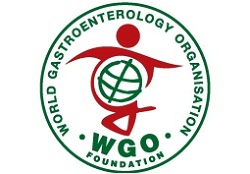



Dear Colleagues,
Heartburn has been identified, in numerous high-impact guidelines, as one of the cardinal symptoms of gastroesophageal reflux disease (GERD). Indeed, for practical purposes, heartburn, with or without regurgitation, is considered to be diagnostic of GERD, at least as a basis for initial management.
The prevalence of GERD is increasing worldwide although there are marked differences in the reported prevalence, ranging from 2.5% to 6.6% in Eastern Asia up to 13.8% to 25.8% in North America. The reason for the increasing prevalence of GERD is not entirely clear, but it appears to be correlated with the increasing prevalence of obesity in many countries and, perhaps, to other dietary factors. GERD is associated with a significant impact on health-related quality of life and reduction in personal and work-related productivity; it is, also, associated with a greater risk of Barrett’s esophagus, a pre-malignant condition that may progress to esophageal adenocarcinoma. Fortunately, GERD can, generally, be treated safely and effectively with acid suppression medications whilst surgical anti-reflux therapy is, also, effective. However, the investigation and treatment of GERD can be costly and the management of GERD patients has to be optimized, in many jurisdictions, in the context of the many other pressures on the healthcare system.
Heartburn is, thus, the key presenting symptom of a very common condition – GERD – that has major implications for individuals and healthcare systems. Despite this, the sensitivity and specificity of heartburn rarely exceed 70-75% for the diagnosis of GERD; a substantial proportion of GERD patients do not have heartburn and, conversely, a substantial proportion of individuals with heartburn do not have GERD. It is, therefore, important to recognize that heartburn may be the presenting feature of other conditions ranging from functional heartburn to eosinophilic esophagitis and motility disorders such as achalasia, as well as extra-esophageal conditions, including ischemic heart disease. Furthermore, although the term ‘heartburn’ is widely recognized, it may be understood differently by different patients and healthcare providers in different linguistic, social and cultural settings.
The World Gastroenterology Organisation (WGO) wishes to raise awareness of heartburn and to provide a broad overview on this common symptom by providing gastroenterologists and, hence their patients and the lay public, with an understanding of the latest basic and clinical research in the pathogenesis, investigation and treatment of esophageal symptoms. “Heartburn: A Global Perspective,” the WGO campaign for World Digestive Health Day 2015, seeks to translate research into clinical practice and facilitate communication between healthcare providers, healthcare payers and heartburn sufferers to ensure that patients receive appropriate dietary and lifestyle advice as well as appropriate investigations and treatment, relevant to their condition and circumstances. The WGO’s task will be supported by the development of educational and training materials, around the world, in collaboration with WGO Member Societies and by the concurrent development and publication of the WGO Cascades Guidelines on the Management of Gastroesophageal Reflux Disease.
My colleagues and I from the WDHD 2015 Steering Committee look forward to a productive and successful campaign in providing a global perspective on the management of heartburn.
Yours sincerely,
|
|
David Armstrong, MB BChirChair, WDHD 2015 |